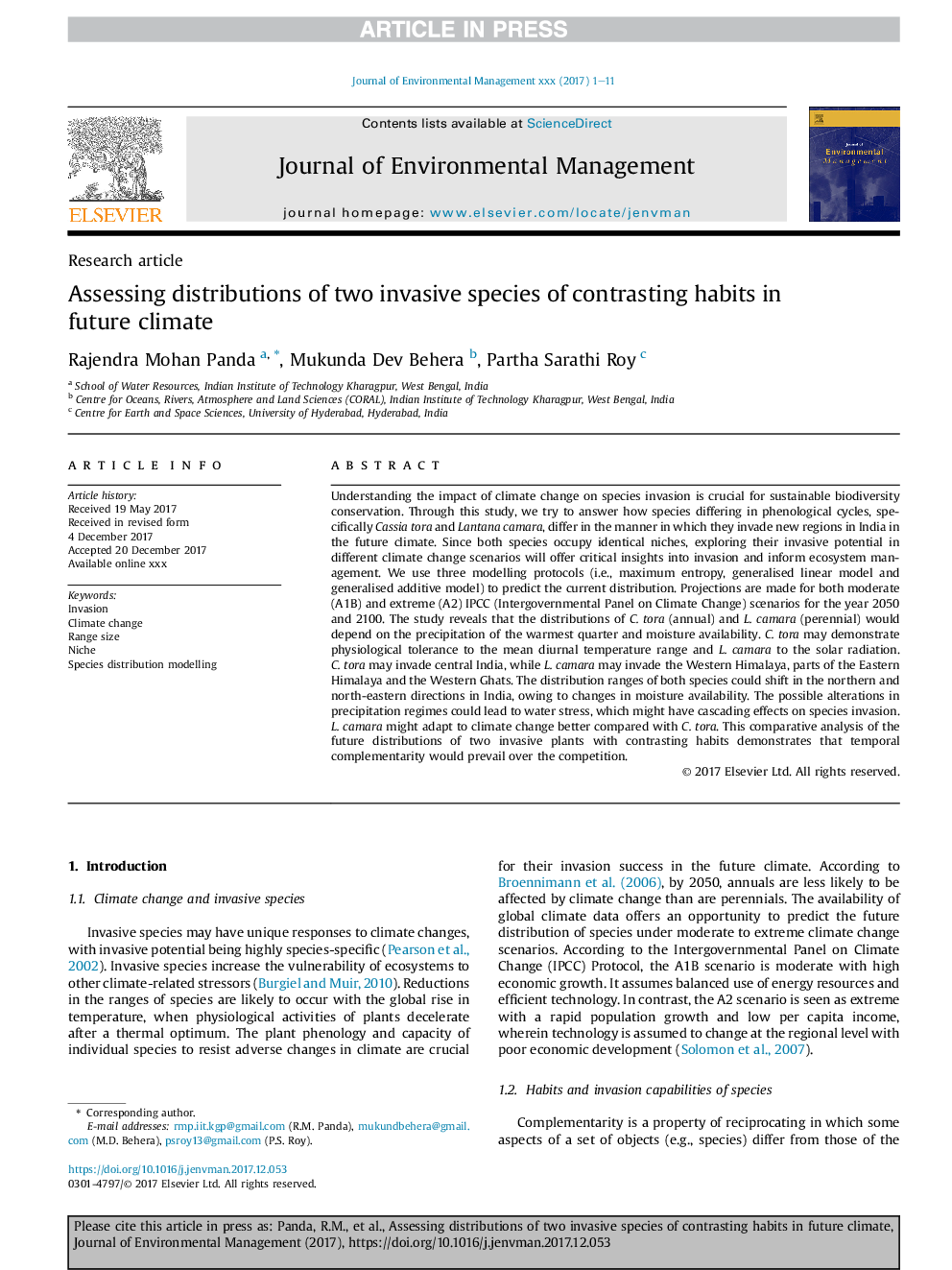| کد مقاله | کد نشریه | سال انتشار | مقاله انگلیسی | نسخه تمام متن |
|---|---|---|---|---|
| 7477987 | 1485205 | 2018 | 11 صفحه PDF | دانلود رایگان |
عنوان انگلیسی مقاله ISI
Assessing distributions of two invasive species of contrasting habits in future climate
ترجمه فارسی عنوان
ارزیابی توزیع دو گونه مهاجم عادت های متضاد در آب و هوای آینده
دانلود مقاله + سفارش ترجمه
دانلود مقاله ISI انگلیسی
رایگان برای ایرانیان
کلمات کلیدی
تهاجم، تغییر آب و هوا، اندازه محدوده، موقعیت مناسب، جایگاه، مدل سازی توزیع گونه،
موضوعات مرتبط
مهندسی و علوم پایه
مهندسی انرژی
انرژی های تجدید پذیر، توسعه پایدار و محیط زیست
چکیده انگلیسی
Understanding the impact of climate change on species invasion is crucial for sustainable biodiversity conservation. Through this study, we try to answer how species differing in phenological cycles, specifically Cassia tora and Lantana camara, differ in the manner in which they invade new regions in India in the future climate. Since both species occupy identical niches, exploring their invasive potential in different climate change scenarios will offer critical insights into invasion and inform ecosystem management. We use three modelling protocols (i.e., maximum entropy, generalised linear model and generalised additive model) to predict the current distribution. Projections are made for both moderate (A1B) and extreme (A2) IPCC (Intergovernmental Panel on Climate Change) scenarios for the year 2050 and 2100. The study reveals that the distributions of C. tora (annual) and L. camara (perennial) would depend on the precipitation of the warmest quarter and moisture availability. C. tora may demonstrate physiological tolerance to the mean diurnal temperature range and L. camara to the solar radiation. C. tora may invade central India, while L. camara may invade the Western Himalaya, parts of the Eastern Himalaya and the Western Ghats. The distribution ranges of both species could shift in the northern and north-eastern directions in India, owing to changes in moisture availability. The possible alterations in precipitation regimes could lead to water stress, which might have cascading effects on species invasion. L. camara might adapt to climate change better compared with C. tora. This comparative analysis of the future distributions of two invasive plants with contrasting habits demonstrates that temporal complementarity would prevail over the competition.
ناشر
Database: Elsevier - ScienceDirect (ساینس دایرکت)
Journal: Journal of Environmental Management - Volume 213, 1 May 2018, Pages 478-488
Journal: Journal of Environmental Management - Volume 213, 1 May 2018, Pages 478-488
نویسندگان
Rajendra Mohan Panda, Mukunda Dev Behera, Partha Sarathi Roy,
